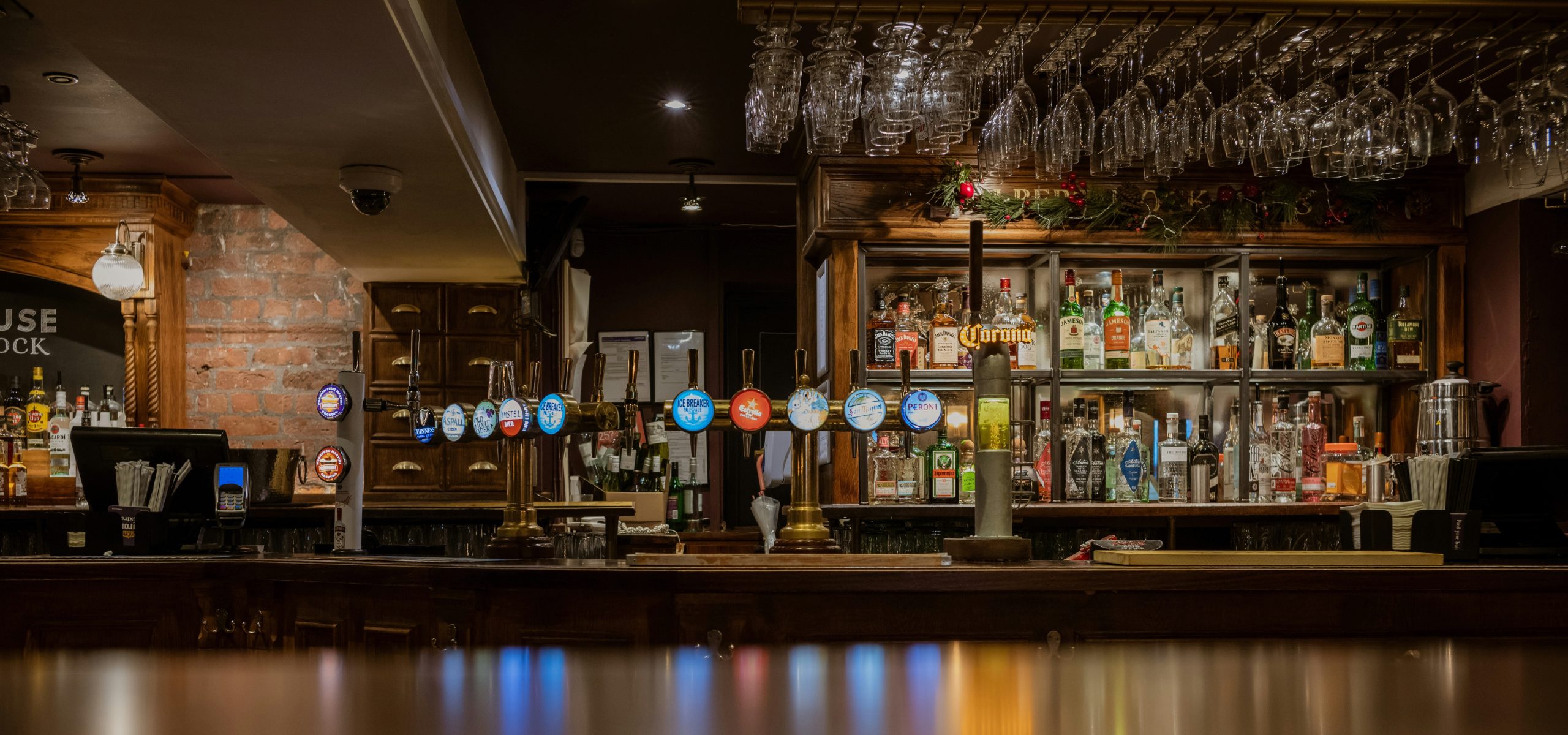Interviews
Crossing The Border: An Interview With David Payne, Author Of Barefoot to Avalon

David Payne is known for his five novels, Back to Wando Passo, Gravesend Light, Ruin Creek, Early from the Dance and Confessions of a Taoist On Wall Street. He knows his way around fiction. His first book, Confessions of a Taoist On Wall Street, received the Houghton Mifflin Literary Fellowship Award, whose previous winners include Robert Penn Warren, Phillip Roth and Robert Stone. Several of Payne’s novels deal with attempting to return home after a long absence and to reintegrate into the community.
In his latest book, a memoir, Barefoot to Avalon (Atlantic Monthly Press 2015), Payne makes the journey home to explore his place in his family and to make sense of a history that is rife with alcoholism, suicide and mental illness. He lays bare the secrets, rivalries, and negotiations that make up family life. The story is told through the prism of Payne’s relationship with his brother, George A., who suffered from manic depression.
Payne and I talked about his evolution from fiction writer to memoirist, the nature of intimacy, and what books should do for readers.
EBM: How did writing novels prepare you for taking on memoir in Barefoot to Avalon?
Over time, I’ve become a little more aware of where the metaphors come from in myself and a little better able to manipulate them toward conscious ends.
DP: My first novel, Confessions of a Taoist On Wall Street, was about a Taoist monk who grows up in a monastery in China practicing esoteric qigong and later comes to New York looking for his American father, a combat aviator who had been in China during WWII. That protagonist’s experiences were so remote from mine that I didn’t see the book as autobiographical in any meaningful way. Now? A character who searches through the world, crossing oceans and wildernesses in search of a father he never really finds, who consoles himself with esoteric practice — think writing — now seems deeply autobiographical, not literally, of course, but in a metaphoric sense. To be honest, I’m not sure fiction is ever fully fictional or that we can ever not write about ourselves, even if we want to. Even Luke Skywalker dueling Darth Vader on the Death Star a long time ago in a galaxy far, far away, is and has to be a representation of the conflicts in George Lucas’s unconscious. I think that holds for everything we take as “make believe.” Over time, I’ve become a little more aware of where the metaphors come from in myself and a little better able to manipulate them toward conscious ends. Book by book, I’ve come closer to the border between fiction and non-fiction, and it seems inevitable that I’d eventually cross over.
EBM: You once said about writing fiction that the characters were like having a ventriloquist dummy on your lap and you spoke through them. What prompted you to finally move the dummy off your lap?
DP: The dummy is finally a way of maintaining plausible deniability, of the ventriloquist/comedian — me, that is — speaking the deepest, darkest, hardest truths he knows without being held fully accountable. ‘Hey, the dummy said it, not me.’ I’m not interested in that kind of distancing anymore. I’d rather say, ‘This is what I think, this is what I feel, this is what I believe. Here it is. What do you think?’
EBM: What elements do your fiction and memoir share? How do they differ in terms of their creation?
DP: Both are narrative acts. Both involve storytelling, characterization, description, setting. Novels tend to have plots; memoirs tend not to. Plots make things easier in a way. The gun that appears in Act I implies the firing of the gun in Act II. The engine that drives a memoir isn’t necessarily implied or obvious. Each is unique and must arise organically out of the material itself. That makes it harder and more interesting, or interesting in a different way.
EL: I’d like to discuss your apprenticeship as a writer. What aspect of it — education, teaching, reading, writing groups, mentors — was most instrumental in you finding your voice?
DP: My very first creative writing teacher in my very first creative writing course — this was Robert Kirkpatrick at UNC in 1973 — gave our class an assignment: Write a letter that says the thing you most need to say and could never say to the person you most need to say it to and could never say it to. To this day, it remains the most powerful creative writing exercise I’ve ever done and probably the most important pedagogical experience I had during my education. In Kirkpatrick’s class, we didn’t read the letters aloud. When I assign it to my students now, we do. I read them my letter first, send them off to write their own, and then invite those who wish to share to share. Most do. Invariably the tone of the room changes; it becomes like church. Often, there are tears. When people are honest and go deep, it’s inevitably the areas of hurt and fear and shame they’ve felt most isolated by that resonate most powerfully with others, who have similar stories of their own. It’s a way of getting to the material that I think Kafka means when he says, “we need the books that affect us like a disaster, that grieve us deeply, like the death of someone we loved more than ourselves, like being banished into forests far from everyone, like a suicide.” In a way, Barefoot to Avalon is what my letter has turned into after forty years.
EBM: Can you tell me about your choice to tell your life story through the prism of your relationship with your brother George A.?
DP: It wasn’t really a choice. I was sitting in a Hampton Inn in Pawleys Island in 2006, having just finished Back to Wando Passo and not knowing what my next book would be, and a voice inside me said, “It’s time to write about George A.,” my brother. That instant I knew my next book had been assigned. All my books have come to me like lightning flashes in that way. One minute I’m wandering around at loose ends, the next the strike comes and I’m off on the next voyage — three years, five years, in the case of Barefoot to Avalon, eight. Though I didn’t consciously choose the subject matter, the story of my brother and his illness was a door that opened into deep places inside me and our whole family, offering a way into the big questions, Who Am I and Who Were We.
EBM: The book is very candid about your life experiences and includes stories about sexual relationships, abortion, suicide, alcoholism and mental illness. What did you do to stay honest and avoid self-censorship?
My own view is that our private lives, the life of the individual and the family, is still largely terra incognita.
DP: Of course, there’s fear and shame around these subjects and around family secrets in general, but there’s also a kind of guild pride among writers about being brave and candid in confronting them, and a sense of the importance of confronting them. Emerson said, ‘The way to write is to throw your body at the mark when your arrows are spent,’ and I think writers — and many readers, too — admire writers who throw their bodies at the mark. I certainly admire them. My own view is that our private lives, the life of the individual and the family, is still largely terra incognita. Much of what matters most in human life occurs there and yet heavy taboos still exist around exposing it. Those taboos no doubt served a purpose once upon a time, but I think they’ve outlived it now, and it’s up to artists to speak up. Murray Bowen, who founded Family Therapy said: “As families move from the compartmentalized, less mature world of secrets and foibles which they assume they are keeping under cover, and into the world of permitting their private lives to be more open and a possible example for others to follow, they grow up a little each day.” I agree with that.
EBM: Your mother was reluctant at first for you to tell this story. What advice do you have for other memoirists about maintaining family relationships while offering an honest accounting of their experience?
The only thing that was under my control was to tell the truth as well as I could understand it and to try to hit myself harder than I hit anybody else.
DP: I think being intimate — whether with someone in your life or as a writer on the page — involves the risk of rejection and loss. When I set out to write this book, my mother said she believed it was exploitative, and for three years we remained at odds. After she read the first draft, she wrote me a beautiful letter that said, “On reflection, I came to understand that no matter what you wrote, you would be kind and fair and compassionate. And you also said ‘it is my life too,’ which made a strong point for your need and right to write what you remember as truth… All of my little secrets are not really that life shaking and on the final take, do not matter that much, so what I feared has simply gone away.” I’m extremely glad and grateful that she came around, but I would have written — was writing — the book anyway, and whether she came around or didn’t was never under my control. The only thing that was under my control was to tell the truth as well as I could understand it and to try to hit myself harder than I hit anybody else.
EBM: What was the most challenging aspect of writing this book and how did you overcome it?
DP: There were many, but mission creep was one. The level of scrutiny I turned on myself and my brother I wanted to turn on all areas of my life, including my then marriage and my parenting, to present a kind ethnography of a Self, sort of like what Knausgaard is doing in MY STRUGGLE. In fact, I did that — that’s one reason the book took eight years to complete. At one point, the manuscript was 950 pages and around 350,000 words. My agent, Tina Bennett, and I discussed the possibility of publishing in installments that readers might read the way you watch, say, The Sopranos. Tina, however, always maintained that the brother material had greater depth and emotional density, and I trusted her and listened to her and eventually came to believe she was right. So I gave up the Knausgaard/Sopranos idea and aimed for something more like, say, The Godfather, as short and as perfectly distilled as I could make it.
EBM: You use the iceberg metaphor in the book in reference to emotional depth and darkness that lies below the surface in people and relationships. You also reference a race, both the literal race between you and your brother to the pier in Avalon and the figurative one to succeed. Can you tell me about how metaphor functions, not only in a literary way, but psychologically to help us make sense of the world?
The metaphor, in a sense, knew more about me and about my relationship with my brother than I knew about myself or us…
DP: Let me take your second example, the race. As I mentioned before, in 2006 I was at the Hampton Inn in Pawleys Island, SC, when I heard a voice whisper, “It’s time to write about George A.” I knew I had my general subject, but what about George A.? What, specifically? The first thing that came to mind was a memory from the summer of 1975. I’m 20 years old, a sophomore at UNC, George A.’s 17. We’re at our family place on the Outer Banks. George A.’s going back to boarding school and wants to try out for the varsity football team. To make the cut, he has to run a sub-6-minute mile. I’m a distance runner in those days, so George A. asks if he can train with me. Every day we do a four-mile run, two miles down to Avalon Pier in Kitty Hawk and two miles back. Most days, I pace him to the Pier and halfway home, and then I fly, leaving him to finish up alone. But one day, when I kick and start to pull away, he kicks, too. I cut a glance at him. He gives me a strained smile, drops his head and hauls. It’s on. I give it everything I have, and in the final twenty yards, he walks away. When I reach the finish, there he is, panting, hands on knees, trying not to show his glee. Thirty-one years later, when I decide I’m going to write a brother book, this is the first memory that surfaces, the first scene I write. (Now it’s in Chapter 4.) What I find interesting and relevant to your question is that it was at least a year and maybe two or three before I realized this was more than just a specific scene about a specific race we ran one summer; it was a metaphor for our whole lives as brothers, a lifelong race we ran that had love and camaraderie and esprit de corps and mutual assistance in it, together with ferocious competition and the will to win. I didn’t choose the metaphor or craft those meanings into it; it came to me from some place beyond my conscious awareness and intention with the meanings already baked in. The metaphor, in a sense, knew more about me and about my relationship with my brother than I knew about myself or us, and my job as a writer was to pay attention to it until it revealed its hidden truth. By paying attention, I came to a better understanding of my relationship with my brother, got a through-line for my book, and, eventually, a title.
EBM: What can you tell me about the research you did for this book? How did you handle challenges like recalling conversations?
DP: Apart from verifying dates and time lines and speaking to family members to compare their memories to mine, I did very little research. Conversations are as I remember them. I don’t pretend to verbatim recollection — frankly, I distrust anyone who does — and that’s why, in dialogue, I eschewed quotation marks in favor of dashes.
EBM: You grapple with issues of expectation and how we idealize family relationships and end the book with your decision to stay sober and thoughts on the necessity of each generation to bear witness to the realities of family life, however imperfect. A realist’s happy ending?
I don’t claim this book is noble — it may seem ignoble to some — but I do think it was a deed.
DP: When I began this book in 2006, I was an alcoholic whose drinking was off the rails; I was in an unhappy marriage; I was an indifferent father. By the time I ended it in 2014, I was eight years sober; I’d worked hard to save my marriage, failed and ended it; I’d found a new love and become a committed father. Not all of that came out of writing, certainly — much came out of therapy — but the writing and the therapy were two prongs of a sustained act of self-investigation and confrontation that I undertook, not because I was brave but because I was desperate to change and didn’t know how else to go about it. Thoreau said, “Writing may be either the record of a deed or a deed. It is nobler when it is a deed.” I don’t claim this book is noble — it may seem ignoble to some — but I do think it was a deed. I didn’t know if my deed would lead to change; there were times I feared it might produce insight without change. I also feared that what I wrote might be boring and irrelevant to others, like reading transcripts of another person’s therapy. But I remembered the letter I first wrote in Kirkpatrick’s class, the powerful effect it had on me, I remembered all the letters my students had written and bravely shared over the years, I recalled the sense of being ushered together in a kind of church, and I wrote in the hope that I might bring readers into that space with me.









